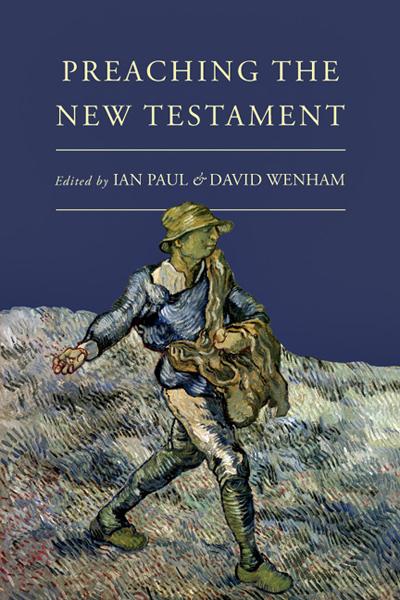A Brief Book Summary from Books At a Glance
By David Dickenson
Overview
Preaching is important, for through the preaching of God’s Word the church is transformed and brought into the image of God’s Son. To preach faithfully is to participate in God’s speech. However, such preaching is not merely reading biblical texts aloud, for a historical and linguistic gap has formed between text and people.
This book helps bridge the gap between text and audience. It does not offer advice on preaching style or rhetorical effectiveness, valuable though such topics are. Instead, it is a book informed by scholar-preachers that aims to offer insight on how best to interpret and communicate the original message of the New Testament today. The book gives an approach to preaching the various literature of the New Testament, as well as some issues to be addressed in New Testament preaching more generally.
The book originated from a meeting of the New Testament Group of the Tyndale Fellowship for Biblical and Theological Research, which took place in July 2011.
Table of Contents
Introduction (Ian Paul and David Wenham)
- Preaching the Gospels (D.A. Carson)
- Preaching on the infancy narratives (R.T. France)
- Preaching Jesus’ parables (Klyne Snodgrass)
- Preaching the miracles of Jesus (Stephen I. Wright)
- Preaching the Sermon on the Mount (David Wenham)
- The challenges and opportunities for preaching from the Acts of the Apostles (Christoph Stenschke)
- Preaching Paul’s letters (Justin K. Hardin and Jason Maston)
- Preaching from the Pastoral Epistles (I. Howard Marshall)
- The challenge and opportunity of preaching Hebrews (Charles A. Anderson)
- Preaching the General Epistles (Mariam J. Kamell)
- Preaching from the book of Revelation (Ian Paul)
- How archaeology and history can help with New Testament preaching (Peter Oakes)
- Preaching the ethics of the New Testament (John Nolland)
- Preaching hope and judgment (Stephen Travis)
- The hermeneutics of relationship: theological understanding for New Testament preaching (William Olhausen )
- The role of exegesis and biblical texts in preaching the New Testament: engaging with the ‘New Homiletic’ (Helge Stadelmann)
- Preaching the gospel from the Gospels (Paul Weston)
Summary
Chapter 1: Preaching the Gospels
D.A. Carson
Seven pieces of advice will prove helpful in preaching the Gospels faithfully. First, one must understand that the Gospels are about Jesus, specifically about his earthly ministry and especially the cross and resurrection. Any sermon series that fails to recognize this has failed to appreciate the Gospels for what they are. Forgetting that the Gospels are fundamentally about Jesus can lead to isolated treatment of Gospel material (parables, miracles, etc.) rather than showing how it all relates to Jesus’s mission, the cross, and the resurrection. Remembering that the Gospels are about Jesus also keeps preachers from emphasizing what is only secondary (discipleship, evangelism)
Second, we must recognize their genre and sub-genres (narrative, genealogy, parable, etc.), as well as different rhetorical devices. These genres and devices should be treated accordingly.
Third, we must look at longer units. Many portions of the Gospels are clear units that demand to be treated together. While it is possible to preach several sermons for such units, such an approach might not be helpful. Helping people see how individual pericopes tie together in the flow of the Gospel can be more fruitful for their understanding.
Fourth, we must try to live inside each respective Gospel before preaching it. Reading a text carefully a number of times in a single setting and, if possible, reading the text carefully in Greek will lead to more fruitful sermons. Themes of each book, distinctive vocabulary, and structural significance will become more evident the more one lives in each particular Gospel.
Fifth, we must plan the series. One should determine how much text should be covered in a typical week. The congregation factors into the planning of the sermon, as the pastor should be sensitive to the needs of the particular congregation and how best to shepherd them through the text.
Sixth, watch for biblical themes. A number of themes run throughout the whole Bible (kingdom, temple, glory, covenant, etc.). The Gospels are particularly appropriate places to trace out these themes, as they show how Jesus brings us from there (Old) to here (New). Jesus’s identity of himself as the new temple, for instance, could be accompanied by briefly tracing the role of the temple as the dwelling of God in the OT, and then to Revelation where God’s dwelling is with man (Rev. 21:22).
Seventh, we must connect preaching with systematic theology. For instance, John 1:14 (“the Word became flesh”) can be connected to other texts on the incarnation. Doing so shows that the various Scriptures are consistent in their confession. One must, however, be careful not to lose sight of the distinctive message of the particular text in view.
Chapter 2: Preaching on the infancy narratives
R.T. France
Due to their familiarity, preachers run the risk of unsettling their congregations by drawing attention to certain scholarly doubts over the historicity of certain elements, or by stripping away the extra-biblical traditions that have been added to the accounts.
The historicity of events in the infancy narratives has been doubted for several reasons, including the supernatural elements, the seeming lack of correspondence to secular history of the time, the differences between Matthew and Luke, and the agenda the Evangelists have of showing scriptural fulfillment. Preachers must take account of their audience, and if an apologetic is needed, such an apologetic should be brief and not overshadow the positive meaning of the texts.
The second factor affecting preaching of the infancy narratives is their focus on scriptural fulfillment. Jesus is the Messiah promised by the Old Testament. While congregations might gravitate to the nature of Jesus’s birth, Matthew and Luke are more. . .
[To continue reading this summary, please see below....]The remainder of this article is premium content. Become a member to continue reading.
Already have an account? Sign In
